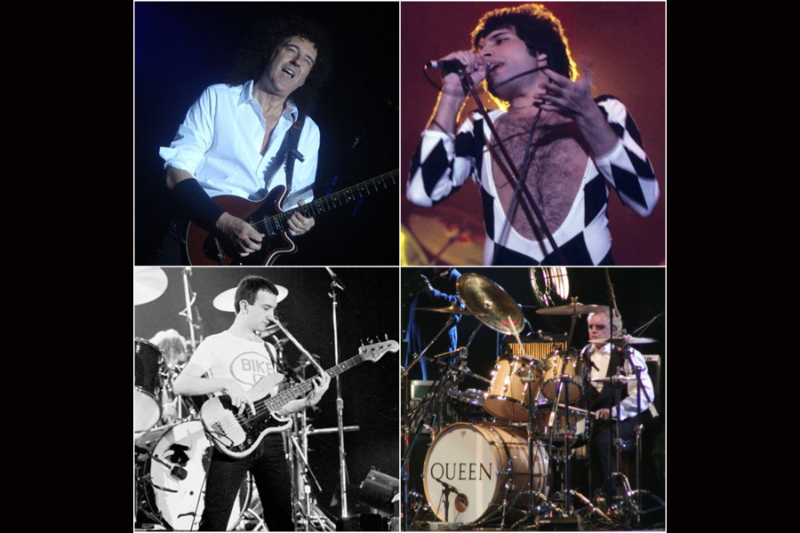
Reply by ccgreg
Wasn’t it recorded on a Stephens 2-inch 40-track? If so, because of the incredible small track width, phase alignment was almost impossible, which made ping-ponging sound very bad. I’ve done it with extremely poor results.
Reply by mwalker_mw
As a tip to the question of the original poster, try to get ahold of the cast recording from “We Will Rock You” – it’s a West End stage production based on Queen music. The final number is Bohemian Rhapsody done by a full chorus live (I’m pretty sure, but you never know these days) on stage.
No, it doesn’t sound like the original recording, but it is a good showing of how to do something similar with a large chorus rather than extensive looping. By the way, the recording is a live multitrack, so it isn’t great, but you should be able to get some ideas out of it. Brian May and Roger Taylor were fairly heavily involved in the creative process as well, I understand.
Reply posted by heef
An article in Sound on Stage magazine several years ago had a story on the remix of “BoRap for” 5.1. Has a nice quote from Brian May too. All the extra high falsettos are by Roger. Brian and Roger make up a fair amount of the opera section too. Apparently vocals were still being tracked on the day of mixing.
Rob Schnapf tells me that Roy Thomas Baker used a Stephens Electronics tape machine. Whether this was one manufactured by Stephans, or a 3M modified by Stephens, I don’t know. I do know that “A Night at the Opera” was one of the first 24-track recordings, so it was obviously recorded on a 24-track.
Reply by dwo
There’s no real trick to achieving those vocals.. .it’s just #6 cattle wire with the tri-barb configuration, 10-inch barb spacing. Just adorn the singer in an appropriate fashion.
Some use this in conjunction with a run of electric fence wire, hookup is on a low voltage 100 amp slo-fire power supply set to gap on a 4 second interval, partly to let the deep surge caps recharge, but also to avoid singeing the singer with back-to-back DC whacks.
The high voltage/low ampere ones work better and are less cruel to the animal, but when they spark they make a distinctly audible ‘snap’ that is inappropriate for audio work.
Don’t be shy, man. If you want results, you gotta pay for ‘em. There simply isn’t a more effective inspiration for a singer than employing his genitalia as the dielectric between a sharp piece of metal and a sharp surge of DC.
Reply by doc dave
Is it worth mentioning 10cc’s “I’m Not In Love” in this thread? It is sometimes discussed alongside “BoRap” because of its amazing vocal overdubs. Noteworthy, too, that the only engineering/mixing/production credits are to “10cc”.
Among other things, I take it patience and perseverance are required in large measure. Come to think of it – would a choral group give you the same feel as one or two voices recorded ad nauseum?
Reply by mcallister
If you get a choir to do it great. If you get one guy (or the band) to do it great. Whatever works.
However, do everyone a favor and write out the parts BEFORE you start tracking. Nothing is worse than getting into overdub #4 and hearing “wait, lemme figure out what to sing.” Similarly, you would never say to a choir, “here’s a part. . .” and start singing it to them.
If going the choir route, you’ll need to write it out, all of it. No mistakes. Mistakes will either a) cost you time (money), b) prove to everyone that whoever wrote the ‘score’ is musically illiterate, or c) both.
If going the one guy/band route (presuming that their reading/writing music skills are scratchy at best) have a demo done first; jot down ideas; have a game plan before diving in.
Reply by Fletcher
As long as we’ve strayed from the original topic… this weekend I’m going to be working on the desk that was used to cut “Bohemian Rhapsody.” Had my choice of that desk [a Trident A-Range] or an 8078…
Reply by murray
I’m coming in here way late, but wanted to answer the original question. I know RTB, and have worked lots with engineer Mike Stone (RIP), who recorded about everything Queen did up through “News of the World.”
Anyway, they did the same thing on all their records – all sang the low part together (three times on three tracks), then the middle part (three times, three tracks), etc etc. Freddy would keep a finger on the piano and hit a note for pitch before each take.
Later, Roy (with engineer George Tutko) did the same with the Cars (same stacked treatment even though Cars weren’t on pitch). Also, Queen worked in “deadish” studios. I think Bohemian was done at some funky place in England (Olympic?).
Mike had a stack of snapshots of them recording there, real retro, cramped control room, console tiny. I’ve messed around with Roy’s Stephens-40 (which is actually small, portable) but very cool lookin’. As I recall, he just used it for show and conversation piece, almost positive he never used it for Queen.
By the way, I have a Stephens 8-track and love it. Roy still has his. If you listen to the chorus on Bohemian, it’s actually quite dry, might hear a bit of room. They recorded dry then usually added a bit of Lexicon 224 at mixdown. If you recorded that in your church, it wouldn’t sound tight enough.
